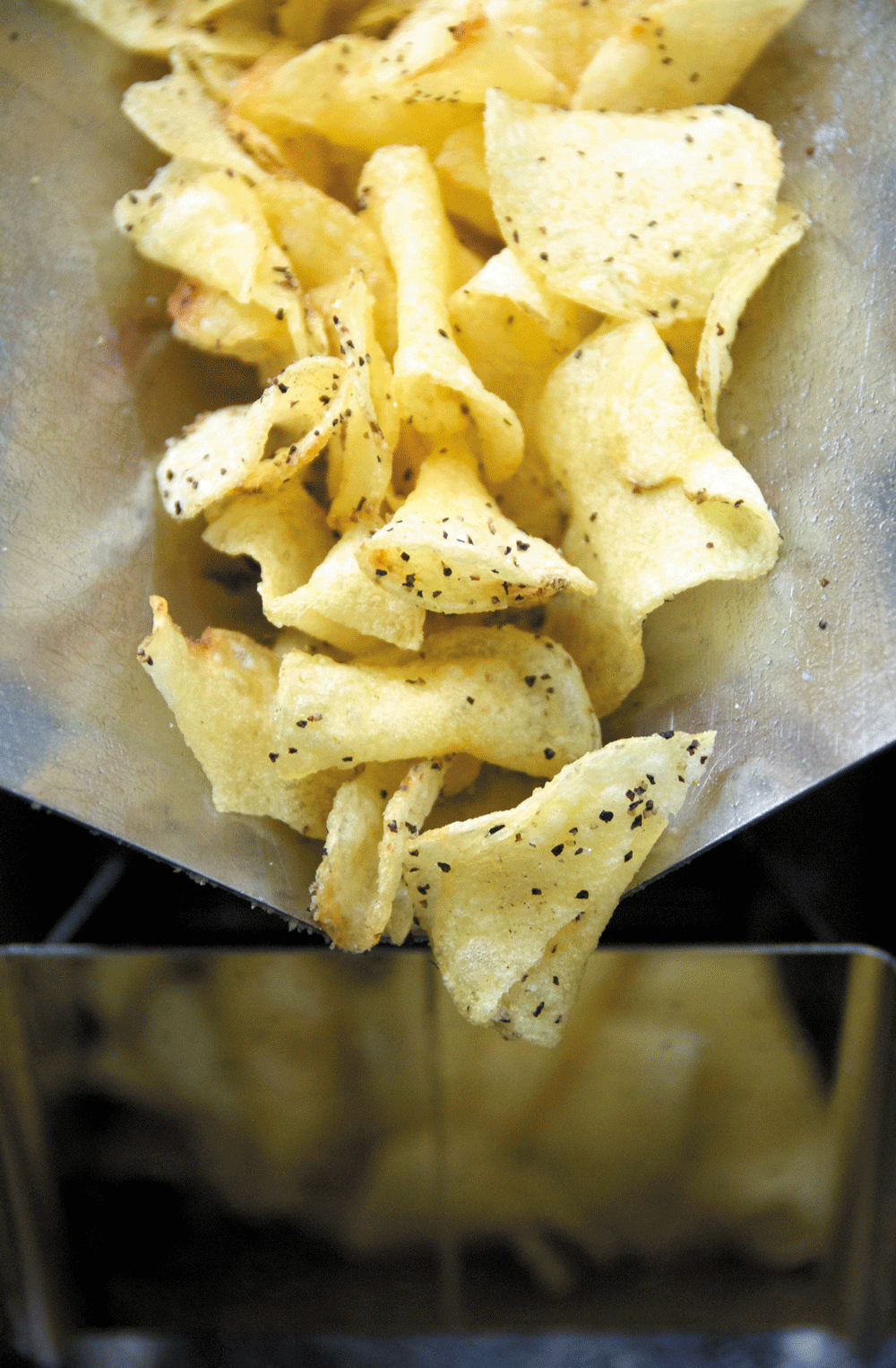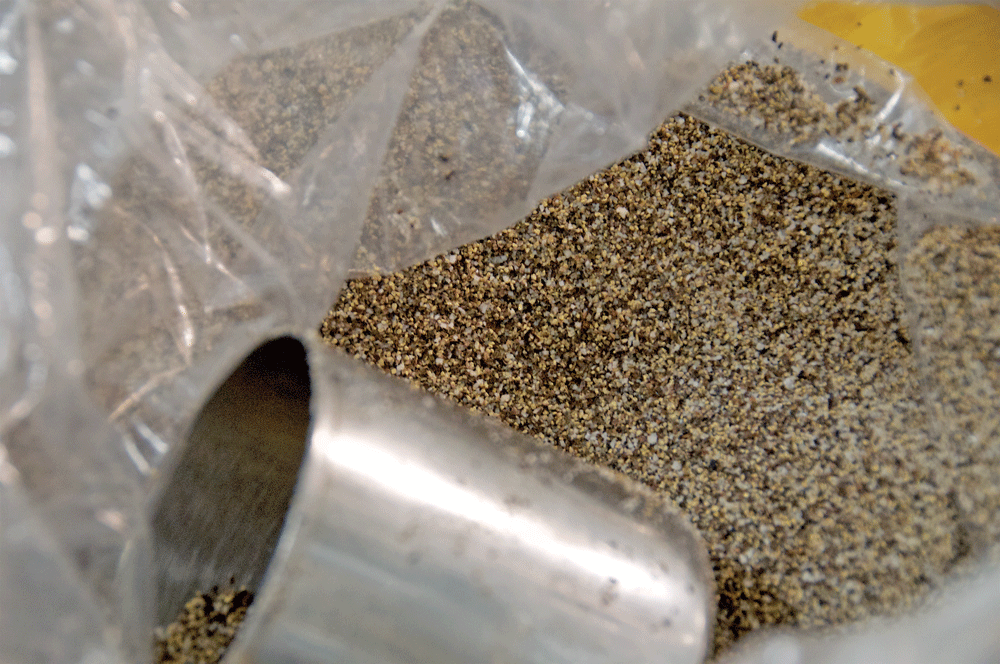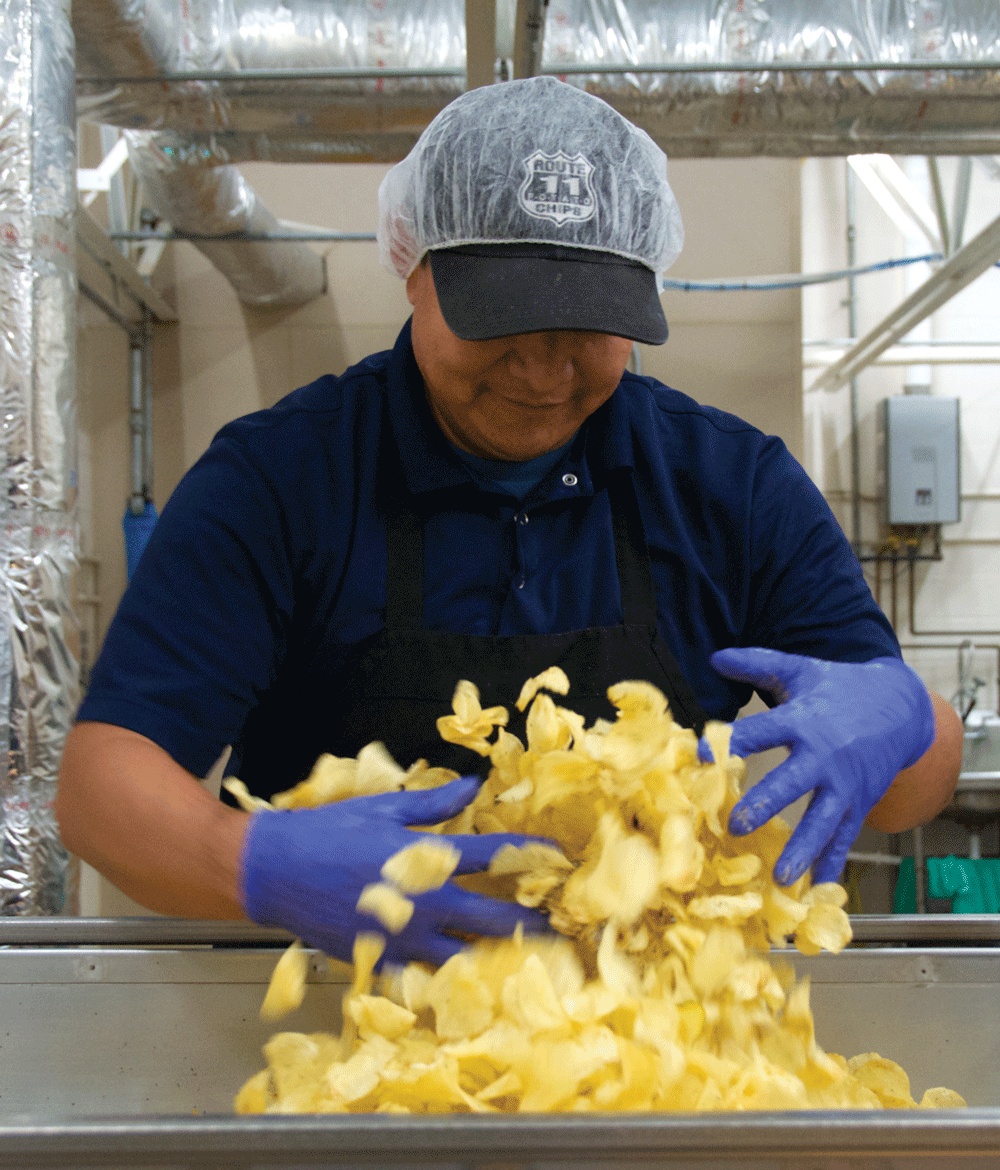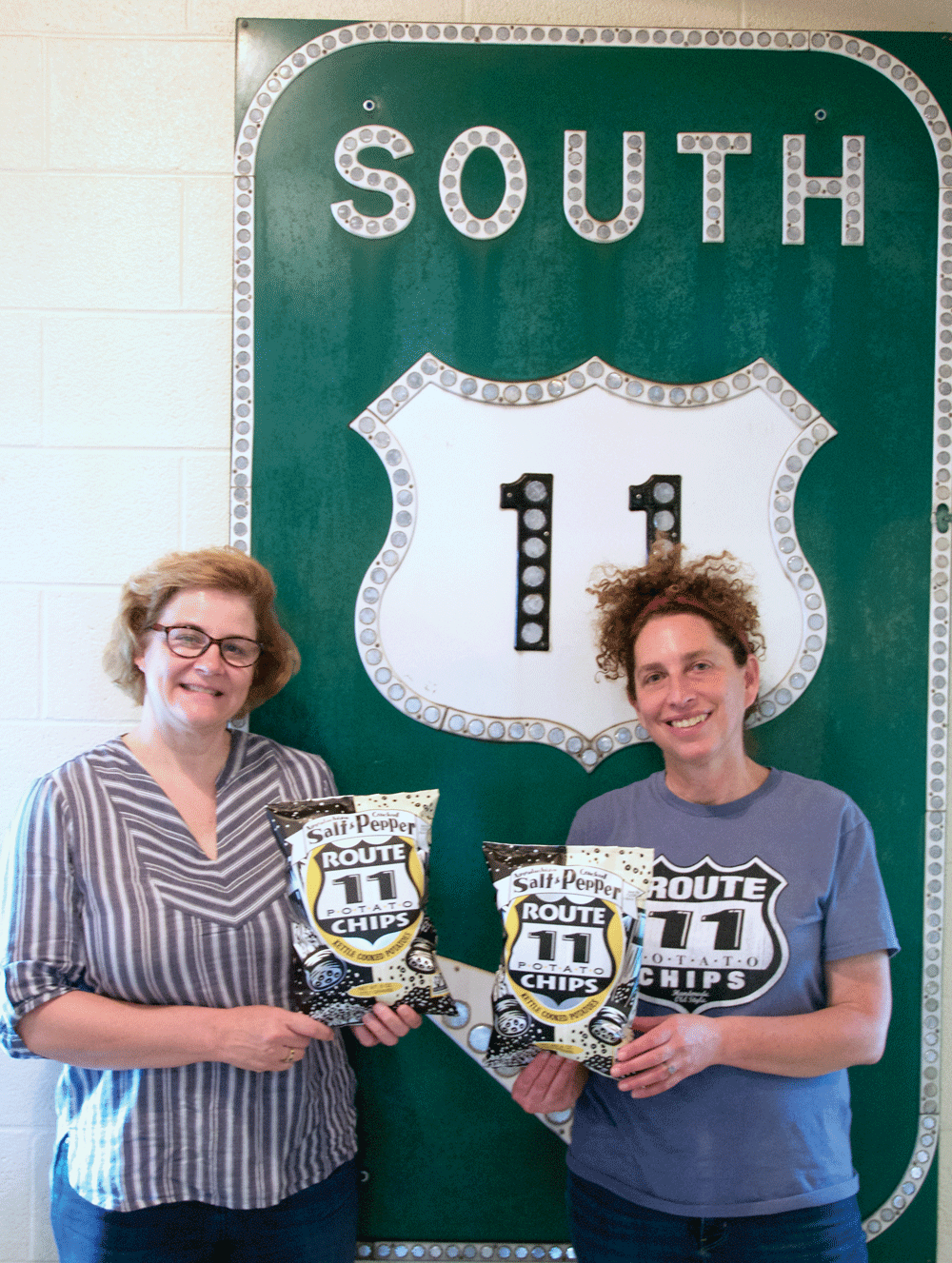Salt Mates

By Ashley Bommer Singh
I should be gardening, but I am eating potato chips. I haven’t been able to stop thinking about these chips since Sarah Cohen, the owner of regional favorite Route 11 Potato Chips, brought advance samples to a dinner party with friends at the Middleburg Christmas Tree Farm. The prototype chips were in clear plastic bags, and she whispered their name in glee: Appalachian Salt and Cracked Pepper. “Appalachian salt?”

We were her first outside focus group, and the new chips were an instant hit. Appalachian Salt and Cracked Pepper chips explode with flavor that tickles your tongue. The salt is from J.Q. Dickinson, a family run salt maker in the mountains of Malden, West Virginia. Sarah explained that the 400-million-year old Iapetus Ocean floor ended up tucked under the Appalachians here. J.Q. Dickinson draws from the brine aquifer on that ancient seabed to create pure, mineral-rich artisanal salt through evaporation in sunny greenhouses. It is the only salt harvested this way in the Northern Hemisphere.
By now our heads were spinning. It is very rare that a potato chip could elicit such excitement. But these chips are a masterpiece, and thanks to Route 11’s partnership with J.Q. Dickinson, they are tied deeply to the Virginia Piedmont and the Appalachians. Who could resist a handcrafted potato chip that lets you taste the sun and an ancient sea? I was hooked and told Sarah I wanted to be at the factory in Mount Jackson for the first
production run.
A filmmaker turned chip artisan, Sarah grew up around her parent’s cozy and chic farm-to-table restaurant and hotel, the iconic Tabard Inn in Washington, D.C. Her family made its first batch of chips in the 1980s to help a friendly farmer next door survive after his main customer ended up in jail. Sarah established Route 11 in 1992, chipping off a tiny piece of the $9 billion industry. Her 41 employees turn six million pounds of potatoes, and one million pounds of organic sweet potatoes, into handcrafted chips every year. By contrast, that’s about one week of production at a major Frito Lay plant.
At the Route 11 factory we meet Nancy Bruns, co-owner of J.Q. Dickinson, who has driven up to witness this partnership take flight. Route 11 staff are busy hand-shuffling the chips as they enter the lofted seasoning room from the fryer below. The men shake the salt and pepper and toss the chips by hand, looking out for any rejects. It’s hard work. Nancy beams, “It was always a dream of mine to find a potato chip partner.”
Nancy, a former chef and restauranteur, runs J.Q. Dickinson with her brother Lewis Payne on a farm that has been in the family for seven generations. They’ve revived the original family business, started by an ancestor named William Dickinson who helped lead a veritable salt rush in the 1800s. Crystals from the Kanawha Valley won “World’s Best Salt” at the London World’s Fair in 1851.

The industry at that time was dirty and fueled by slave labor. After emancipation, freed slaves and poor whites continued to toil at the salt furnaces, which were fired by wood and coal. In 1865, a recently freed Booker T. Washington, age 9, was put to work by his stepfather at a Malden salt maker. In Up from Slavery, Washington describes foul conditions and filth. He also notes the start of his education. “The first thing I ever learned in the way of book knowledge was while working in this salt-furnace,” Washington writes, explaining how the number assigned to his stepfather’s salt barrels—18—was the first thing he ever read or wrote.
As one way to face the dark aspects of history today, Nancy and Lewis ensure they have an environmentally sound and socially aware business. J.Q. Dickinson uses just the sun and breeze to refine its salt and has sponsored lectures and studies on the little-known legacy of salt and slavery in the Kanawha Valley.
The siblings only discovered their salt-making heritage when Nancy’s scholar ex-husband, Carter, uncovered family names during his research. Although the Dickinson family ran the last salt operation in Malden right up to 1945, it was not talked about. Following old company survey maps of the salt wells, they tried to rediscover the forgotten ancient brine.
“We stood around with little cups,” says Nancy. “They hit water again and again. No salt. Finally, past 300 feet down, water gushed, and we held up our cups. Brine.” It was a revelation. Now, with a team of 10, J.Q. Dickinson harvests salt from March to November. The roughly five-week refining process depends on the weather: They need the sun and low humidity.
The salt finds its way to hundreds of gourmet restaurants and shops. Using specialty salts has long been a secret to great chef’s dishes because it enhances flavor rather than changing it. J.Q. Dickinson is sprinkled across the country from Baltimore’s Woodberry Kitchen to the Napa Valley’s French Laundry. You enjoy it dining at many local restaurants including Field & Main in Marshall, the Ashby Inn in Paris, and Patowmack Farm in Lovettsville.

At the chip factory we all grabbed bags coming off the line: Route 11’s first new flavor in 12 years. The wait has been worth it for the small but mighty company. If Sarah’s potato chips have finally found a soulmate, it is
Appalachian salt.
Sarah had been looking to combine simple salt and pepper for years. It was her business partner Mike Connelly’s favorite flavor, and he would leave not-so-subtle hints around the factory in the form of empty bags of their competitor’s salt and pepper chips. They tried with the wonderful Real Salt from Utah that they love on the best-selling Route 11 Lightly Salted chips, but it wasn’t quite right. The competitors’ bags offered a clue: salt and pepper chips also had sugar, garlic powder, vinegar, rice powder, onion powder, maltodextrin, jalapeno powder, brown rice flour and all manner of other ingredients. Sarah wanted to be simple and pure. “But we couldn’t get the flavor dynamic we wanted,” she says. “We just gave up.”
A chance meeting at the food show in Washington, D.C., changed that when Nancy handed over a small jar of her coveted salt. Nancy knew and loved Route 11 potato chips. “I was hoping Sarah would call,” she says.
And call she did. “As soon as we tasted Nancy’s salt it was my oh MY God moment,” Sarah says. “We didn’t have to be conventional. We could do this ourselves.”

A Route 11 colleague runs in and shouts above the din, “I already ate the whole bag!” It was 10 a.m. She happily holds up the empty package with its bold silver and black salt and pepper shakers designed by woodcut artists Neil and Kerry Stavely of Horse & Hare in Winchester.
Nancy smiles with her first bite. “The beauty of our salt on this is it finishes slightly sweet,” she says. They did it the way they wanted: potatoes, sunflower oil, salt, pepper. Four simple ingredients. As we got ready to leave, Nancy pulled around back to unload 250 more pounds of J.Q. Dickinson salt. Good thing. Appalachian salt may lead Route 11 to up production by another million pounds this year. ML


